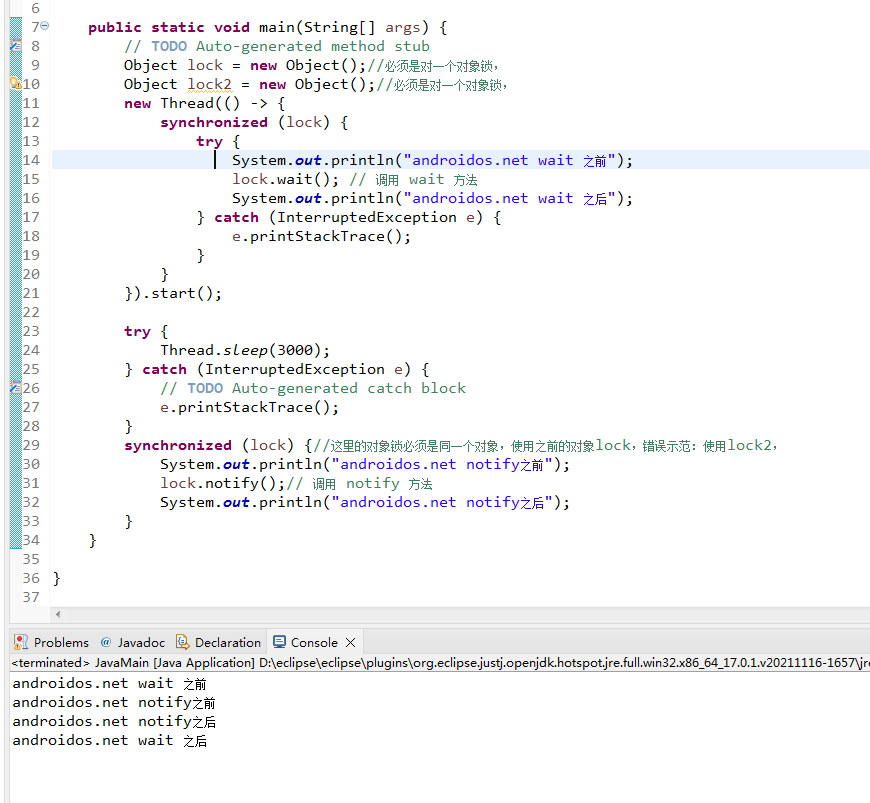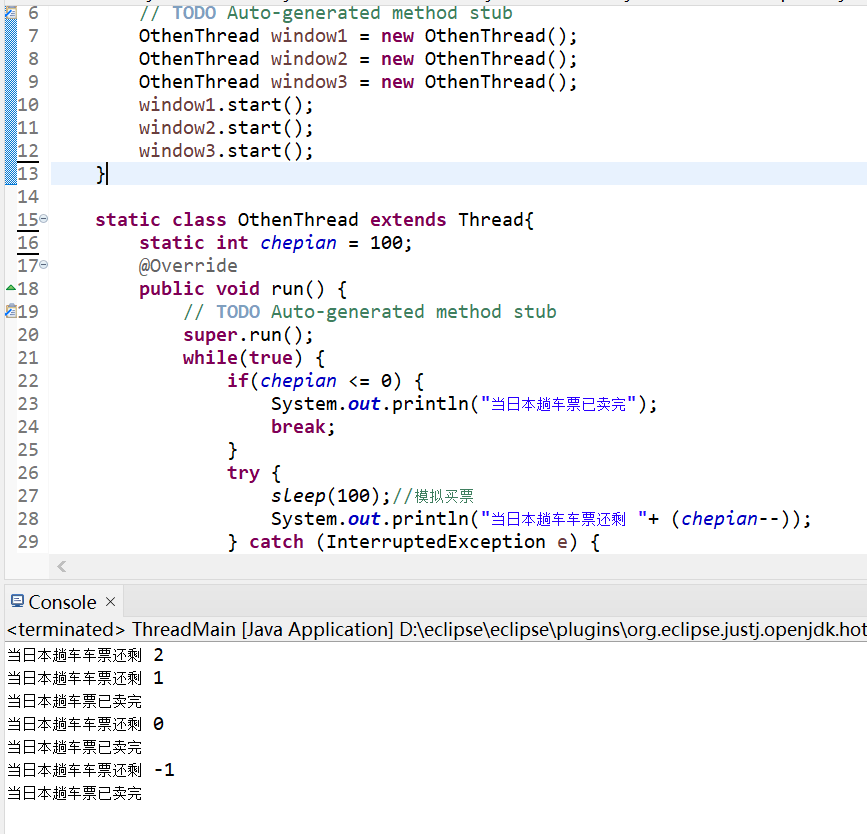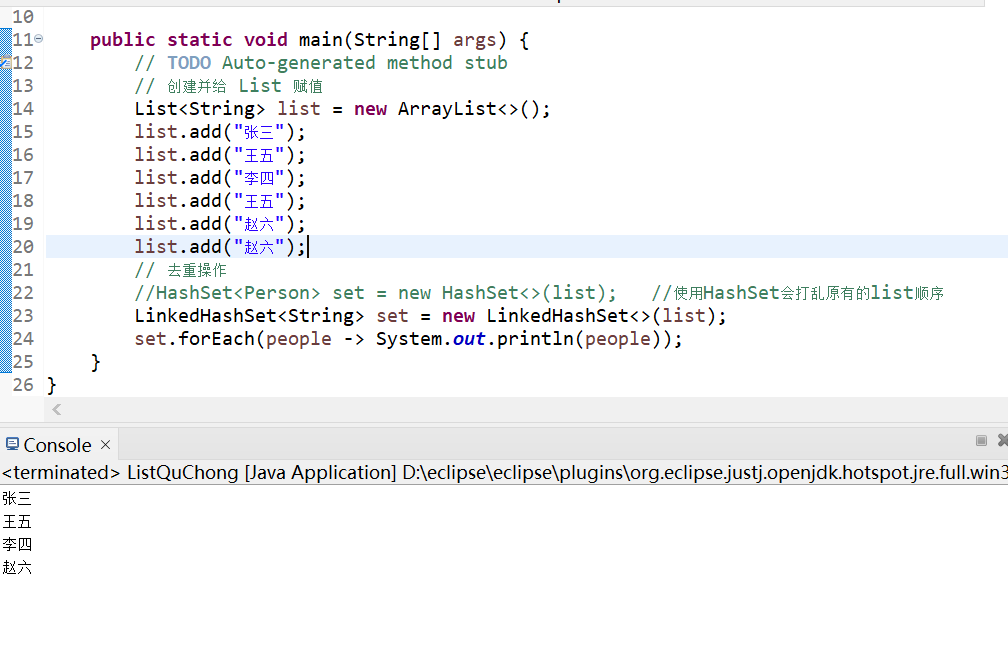java 三种调用机制(同步调用,异步调用,回调)及依赖关系传递的三种方式
【1】三种调用机制
1:同步调用:一种阻塞式调用,调用方要等待对方执行完毕才返回,它是一种单向调用
2:回调:一种双向调用模式,也就是说,被调用方在接口被调用时也会调用对方的接口;
3:异步调用:一种类似消息或事件的机制,不过它的调用方向刚好相反,接口的服务在收到某种讯息或发生某种事件时,会主动通知客户方(即调用客户方的接口
具体说来:就是A类中调用B类中的某个方法C,然后B类中反过来调用A类中的方法D,D这个方法就叫回调方法,
1、同步调用
同步调用是最基本的调用方式,对象b中的方法直接调用对象a的方法,这个时候程序会等待对象a的方法执行完返回结果之后才会继续往下走。
代码如下:
public class A {
public void methodA()
{
System.out.println("this is class A method");
}
}
public class B {
public void methodB()
{
A a = new A();
a.methodA();
System.out.println("this is class B method");
}
}
public class Test {
public static void main(String[] args) {
B b = new B();
b.methodB();
}
}
结果:
this is class A method
this is class B method
2、异步调用
对象b中的方法调用对象a的方法,程序并不需要等待对象a的方法返回结果值,直接继续往下走。
代码如下:
public class A extends Thread{
@Override
public void run() {
try {
Thread.sleep(3000);
} catch (InterruptedException e) {
e.printStackTrace();
}
System.out.println("this is class A method");
}
}
public class B {
public void methodB()
{
A a = new A();
a.start();
System.out.println("this is class B method");
}
}
public class Test {
public static void main(String[] args) {
B b = new B();
b.methodB();
}
}
结果:
this is class B method
this is class A method
说明:异步调用我们通常采用多线程的方法来达到目的
3、回调
对象a的方法methodA()中调用对象b的methodB()方法,在对象b的methodB()方法中反过来调用对象a的callBack()方法,这个callBack()方法称为回调函数,这种调用方法称为回调。
代码如下:
public class A {
public void methodA()
{
B b = new B();
b.methodB(new A());
System.out.println("this is class A method : methodA");
}
public void callBack()
{
System.out.println("this is class A method : callBack");
}
}
public class B {
public void methodB(A a)
{
System.out.println("this is class B method : methodB");
a.callBack();
}
}
public class Test {
public static void main(String[] args) {
A a = new A();
a.methodA();
}
}
运行结果:
this is class B method : methodB
this is class A method : callBack
this is class A method : methodA
注意:这里如果为了代码的扩展性更好,可以把类A与类B抽象出一个接口出来,然后用实现类去实现着两个接口,这样代码的扩展性会更好,也能满足更多的业务场景。
回调的核心在于:回调方将本身对象传给调用方,调用方在本身代码逻辑执行完之后,调用回调方的回调方法。
原文链接:https://blog.csdn.net/zhenwei1994/article/details/79615861
【2】依赖关系传递的三种方式
首先先来理解一下java的依赖的定义:
依赖就是:A类中有B类的属性,那么A类就依赖B类 ,也就是说a类中引用了b类的b变量就叫依赖,
2.1 通过接口传递实现依赖
interface IOpenAndClose{ //开关接口
public void open(ITV tv);//抽象方法,接收接口
}
interface ITV{ ITV接口
public void play();
}
class HaiEr implements ITV{
public void play(){
System.out.println("play haier TV");
}
}
class OpenAndColse implements IOpenAndClose{
public void open(ITV tv){
tv.play();
}
}
public static void main(String[] args){
HaiEr haier = new HaiEr();
OpenAndColse openAndClose = new OpenAndColse();
openAndClose.open(haier);
}2.2 通过构造方法实现依赖传递
interface IOpenAndClose{ //开关接口
public void open(ITV tv);//抽象方法,接收接口
}
interface ITV{ ITV接口
public void play();
}
class HaiEr implements ITV{
public void play(){
System.out.println("play haier TV");
}
}
class OpenAndColse implements IOpenAndClose{
public ITV tv //成员
public OpenAndColse(ITV tv){//构造方法
this.tv = tv;
}
public void open(){
tv.play();
}
}
public static void main(String[] args){
HaiEr haier = new HaiEr();
OpenAndColse openAndClose = new OpenAndColse(haier);
openAndClose.open();
}2.3 通过setter方式实现依赖传递
interface IOpenAndClose{ //开关接口
public void open();//抽象方法,接收接口
public void setTv(ITV tv)
}
interface ITV{ //ITV接口
public void play();
}
class HaiEr implements ITV{
public void play(){
System.out.println("play haier TV");
}
}
class OpenAndColse implements IOpenAndClose{
public ITV tv //成员
public void setTv(ITV tv){
this.tv = tv;
}
public void open(){
tv.play();
}
}
public static void main(String[] args){
HaiEr haier = new HaiEr();
OpenAndColse openAndClose = new OpenAndColse(haier);
openAndClose.setTv(haier);
openAndClose.open();
}




评论